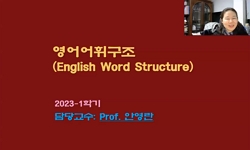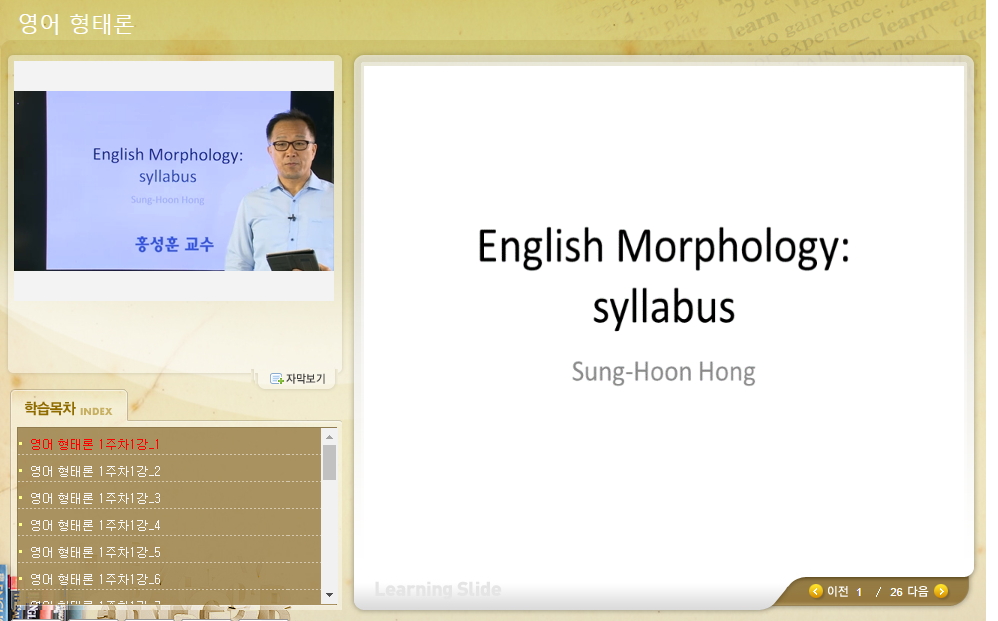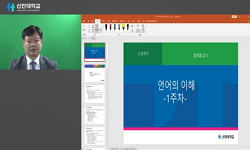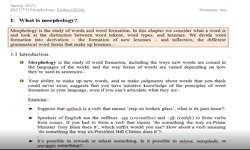The purpose of this study was to examine the role of the morphological characteristics on Korean spoken word recognition. To do so, Experiment 1 examined whether compound words are sub-divided into morphemes. In this experiment, word types (simple wor...
http://chineseinput.net/에서 pinyin(병음)방식으로 중국어를 변환할 수 있습니다.
변환된 중국어를 복사하여 사용하시면 됩니다.
- 中文 을 입력하시려면 zhongwen을 입력하시고 space를누르시면됩니다.
- 北京 을 입력하시려면 beijing을 입력하시고 space를 누르시면 됩니다.

단일어와 합성어를 통해 살펴 본 청각 단어재인 시 형태소 정보의 영향 = The Effect of the Morphological Characteristics on Korean Spoken Word Recognition : Comparing Simple Words and Compound Words
한글로보기https://www.riss.kr/link?id=A105121533
- 저자
- 발행기관
- 학술지명
- 권호사항
-
발행연도
2018
-
작성언어
Korean
-
주제어
청각 단어재인 ; 형태소 ; 음절빈도 효과 ; 단일어 ; 합성어 ; Spoken word recognition ; morpheme ; syllable frequency ; simple word ; compound word
-
등재정보
KCI등재
-
자료형태
학술저널
- 발행기관 URL
-
수록면
35-51(17쪽)
-
KCI 피인용횟수
2
- DOI식별코드
- 제공처
- 소장기관
-
0
상세조회 -
0
다운로드
부가정보
다국어 초록 (Multilingual Abstract)
The purpose of this study was to examine the role of the morphological characteristics on Korean spoken word recognition. To do so, Experiment 1 examined whether compound words are sub-divided into morphemes. In this experiment, word types (simple words, compound words) and word frequencies (high, low) were manipulated. Participants performed an auditory lexical decision task. As results, regardless of word frequency, simple words were recognized better than compound words. The results indicate that compound words were separated into morphemes irrespective of word frequency. Experiment 2 further examined the effect of morphological decomposition by adapting syllable frequency effects. In Korean 2 syllable compound words, the first syllable contains a certain morpheme while it is only a part of a morpheme in simple words. Therefore, unlike in simple words, the morphological characteristics of the first syllable of the compound words may have some influences on the syllable frequency effect. Experiment 2 showed larger the syllable frequency effect for simple words compared with compound words, which suggested that facilitation effect of morpheme offsets the inhibitory effect of syllable frequency. Overall, the current experiments clearly suggested that morphological decomposition does occur during spoken word recognition of the Korean compound word.
국문 초록 (Abstract)
본 연구의 목적은 청각 단어재인 시 형태소 정보의 영향을 살펴보는 것이다. 이를 위해 단어 그 자체가 하나의 형태소인 단일어와, 두 개의 형태소가 결합되어 만들어진 합성어의 처리양상...
본 연구의 목적은 청각 단어재인 시 형태소 정보의 영향을 살펴보는 것이다. 이를 위해 단어 그 자체가 하나의 형태소인 단일어와, 두 개의 형태소가 결합되어 만들어진 합성어의 처리양상을 비교하였다. 실험 1에서는 청각 단어재인 시 단어빈도에 따라 형태소의 분리 처리 양상이 달라지는지를 살펴보았다. 이를 위해 단어의 유형(단일어, 합성어) 및 단어빈도(고빈도, 저빈도)를 조작한 후, 청각 어휘판단 과제를 실시하였다. 그 결과, 고빈도와 저빈도 조건 모두 합성어가 단일어에 비해 어휘판단 시간이 느리고 더 부정확했다. 이는 합성어를 처리할 때 단어빈도와는 관련 없이 형태소가 분리되어 처리된다는 것을 보여주는 결과이다. 실험 2에서는 음절빈도 효과를 바탕으로 형태소 분리 처리 여부를 재검증하였다. 일반적으로 형태소 정보는 단어재인에 촉진적인 영향을 미치지만, 음절빈도는 억제적인 영향을 미친다. 합성어의 경우 음절의 단위와 형태소의 단위가 일치하므로, 만일 형태소가 분리되어 처리된다면 음절빈도 효과에 형태소의 효과가 혼입될 수 있다. 단어유형과 음절빈도(고빈도, 저빈도)를 조작한 후 청각 어휘판단 과제를 실시한 실험 2의 결과, 합성어에 비해 단일어에서 더 큰 음절빈도 효과를 보였다. 이러한 결과는 합성어의 경우 첫 음절 형태소의 촉진적 효과가 음절빈도의 억제적 효과를 감소시켰기 때문이라 짐작할 수 있다. 종합하면 본 연구의 결과는 청각 단어재인 시 형태소가 분리되어 처리되며 단어의 형태소 특성에 따라 음절빈도 효과가 다르게 나타난다는 것을 보여준다.
참고문헌 (Reference)
1 배성봉, "한자 점화가 한글 표기 한자어 재인에 미치는 효과" 언어과학회 (79) : 139-156, 2016
2 권유안, "한글 음절 이웃 효과에서 한자어 형태소의 영향: 표기 및 음운 이웃과 한자어 이웃과의 관련성 중심으로" 한국인지및생물심리학회 23 (23): 301-319, 2011
3 남수린, "한국어 고유 접두파생명사의 철자, 형태소, 의미 정보 활성화 양상 차이" 한국인지및생물심리학회 26 (26): 1-20, 2014
4 권유안, "첫 음절 토큰 빈도와 타입 빈도가 단어 및 유사 단어 어휘 판단 시간에 미치는 영향" 한국인지및생물심리학회 24 (24): 315-333, 2012
5 이태연, "차폐점화과제와 비차폐점화과제에서 어휘빈도와 의미투명도가 복합명사의 분리처리에 미치는 효과" 한국인지및생물심리학회 21 (21): 337-353, 2009
6 강진원, "의미 및 철자 정보와 구분되는 한국어 고유 접두사의 형태소 ERP 지표" 한국인지및생물심리학회 28 (28): 409-430, 2016
7 권유안, "시각 단어 재인시 나타나는 음절 빈도효과의 원인 규명: 사건관련 뇌전위 연구" 한국언어과학회 22 (22): 1-17, 2015
8 이태연, "사용빈도와 의미투명도가 복합명사의 분리처리에 미치는 효과" 한국인지과학회 18 (18): 371-398, 2007
9 권유안, "명명 과제에서 음절 토큰 및 타입 빈도 효과" 한국인지과학회 25 (25): 91-107, 2014
10 이광오, "단어인지 수행은 어종에 따라 다를까?" 한국인지및생물심리학회 15 (15): 479-498, 2003
1 배성봉, "한자 점화가 한글 표기 한자어 재인에 미치는 효과" 언어과학회 (79) : 139-156, 2016
2 권유안, "한글 음절 이웃 효과에서 한자어 형태소의 영향: 표기 및 음운 이웃과 한자어 이웃과의 관련성 중심으로" 한국인지및생물심리학회 23 (23): 301-319, 2011
3 남수린, "한국어 고유 접두파생명사의 철자, 형태소, 의미 정보 활성화 양상 차이" 한국인지및생물심리학회 26 (26): 1-20, 2014
4 권유안, "첫 음절 토큰 빈도와 타입 빈도가 단어 및 유사 단어 어휘 판단 시간에 미치는 영향" 한국인지및생물심리학회 24 (24): 315-333, 2012
5 이태연, "차폐점화과제와 비차폐점화과제에서 어휘빈도와 의미투명도가 복합명사의 분리처리에 미치는 효과" 한국인지및생물심리학회 21 (21): 337-353, 2009
6 강진원, "의미 및 철자 정보와 구분되는 한국어 고유 접두사의 형태소 ERP 지표" 한국인지및생물심리학회 28 (28): 409-430, 2016
7 권유안, "시각 단어 재인시 나타나는 음절 빈도효과의 원인 규명: 사건관련 뇌전위 연구" 한국언어과학회 22 (22): 1-17, 2015
8 이태연, "사용빈도와 의미투명도가 복합명사의 분리처리에 미치는 효과" 한국인지과학회 18 (18): 371-398, 2007
9 권유안, "명명 과제에서 음절 토큰 및 타입 빈도 효과" 한국인지과학회 25 (25): 91-107, 2014
10 이광오, "단어인지 수행은 어종에 따라 다를까?" 한국인지및생물심리학회 15 (15): 479-498, 2003
11 Colé, P., "Words and morphemes as units for lexical access" 37 (37): 312-330, 1997
12 Frost, R., "What can we learn from the morphology of Hebrew? A masked-priming investigation of morphological representation" 23 (23): 829-, 1997
13 Taft, M., "Visual and auditory recognition of prefixed words" 38 (38): 351-365, 1986
14 De Jong, N. H., "The processing and representation of Dutch and English compounds : Peripheral morphological and central orthographic effects" 81 (81): 555-567, 2002
15 Mathey, S., "The nature of the syllabic neighbourhood effect in French" 123 (123): 372-393, 2006
16 De Jong IV, N. H., "The morphological family size effect and morphology" 15 (15): 329-365, 2000
17 Schriefers, H., "The identification of morphologically complex spoken words : Continuous processing or decomposition?" 30 (30): 26-47, 1991
18 Kwon, Y., "The different P200 effects of phonological and orthographic syllable frequency in visual word recognition in Korean" 501 (501): 117-121, 2011
19 Frost, R., "The Oxford handbook of psycholinguistics" 107-118, 2007
20 Jacobs, A. M., "Testing a semistochastic variant of the interactive activation model in different word recognition experiments" 18 (18): 1174-, 1992
21 Alvarez, C. J., "Syllables and morphemes: contrasting frequency effects in Spanish" 27 (27): 545-, 2001
22 Conrad, M., "Syllables and bigrams: orthographic redundancy and syllabic units affect visual word recognition at different processing levels" 35 (35): 461-, 2009
23 Carreiras, M., "Syllable frequency and visual word recognition in Spanish" 32 (32): 766-, 1993
24 Diependaele, K., "Semantic transparency and masked morphological priming : The case of prefixed words" 37 (37): 895-908, 2009
25 Conrad, M., "Replicating syllable frequency effects in Spanish in German : One more challenge to computational models of visual word recognition" 19 (19): 369-390, 2004
26 Bybee, J., "Regularmorphology and the lexicon" 10 : 425-457, 1995
27 Grainger, J., "Phonology and orthography in visual word recognition : Effects of masked homophone primes" 33 (33): 218-, 1994
28 Frost, R., "Orthographic depth and the interaction of visual and auditory processing in word recognition" 17 (17): 302-310, 1989
29 Sandra, D., "On the representation and processing of compound words : Automatic access to constituent morphemes does not occur" 42 (42): 529-567, 1990
30 Gold, B. T., "Neural correlates of morphological decomposition during visual word recognition" 19 (19): 1983-1993, 2007
31 Grainger, J., "Neighborhood frequency effects in visual word recognition: A comparison of lexical decision and masked identification latencies" 47 (47): 191-198, 1990
32 Marslen-Wilson, W., "Morphology and meaning in the English mental lexicon" 101 (101): 3-, 1994
33 Longtin, C. M., "Morphological priming without morphological relationship" 18 (18): 313-334, 2003
34 Sonnenstuhl, I., "Morphological priming in the German mental lexicon" 72 (72): 203-236, 1999
35 Longtin, C. M., "Morphological decomposition in early visual word processing" 53 (53): 26-41, 2005
36 Chialant, D., "Morphological aspects of language processing" 55-76, 1995
37 Taft, M., "Morphological aspects of language processing" 293-316, 1995
38 Stolz, J. A., "Morphological aspects of language processing" Erlbaum 109-129, 1995
39 Stanners, R. F., "Memory representation for morphologically related words" 18 (18): 399-412, 1979
40 Grainger, J., "Masked orthographic and phonological priming in visual word recognition and naming : Cross-task comparisons" 35 (35): 623-647, 1996
41 Diependaele, K., "Masked cross-modal morphological priming: Unravelling morpho-orthographic and morpho-semantic influences in early word recognition" 20 (20): 75-114, 2005
42 Taft, M., "Lexical storage and retrieval of prefixed words" 14 (14): 638-647, 1975
43 Bradley, D., "Lexical representation of derivational relation" Juncture 37-55, 1980
44 Caramazza, A., "Lexical access and inflectional morphology" 28 (28): 297-332, 1988
45 Butterworth, B, "Language production. 2" 257-294, 1983
46 Libben, G., "From inkmarks to ideas: Current issues in lexical processing" 259-, 2006
47 Stemberger, J. P., "Frequency and the lexical storage of regularly inflected forms" 14 (14): 17-26, 1986
48 Kawakami, M., "Effects of neighborhood size and kanji character frequency on lexical decision of Japanese kanji compound words" 73 (73): 346-351, 2002
49 Lavric, A., "ERP evidence of morphological analysis from orthography : A masked priming study" 19 (19): 866-877, 2007
50 Tyler, L. K., "Continuous and discontinuous access in spoken word-recognition : The role of derivational prefixes" 27 (27): 368-381, 1988
51 Libben, G., "Compound fracture : The role of semantic transparency and morphological headedness" 84 (84): 50-64, 2003
52 Álvarez, C., "Are syllables phonological units in visual word recognition?" 19 (19): 427-452, 2004
53 Grainger, J., "A dual-route approach to orthographic processing" 2 : 54-, 2011
동일학술지(권/호) 다른 논문
-
기억 응고화 또는 재응고화를 이용한 외상후 스트레스장애의 치료
- 한국인지및생물심리학회
- 김문수
- 2018
- KCI등재
-
The role of trait anxiety and emotional information in the perception of biological motion
- 한국인지및생물심리학회
- 이한나
- 2018
- KCI등재
-
색상 변별 과제를 이용한 수 의미 처리의 자동성 및 수-공간 연합의 맥락 의존성 검증
- 한국인지및생물심리학회
- 김나래
- 2018
- KCI등재
-
기수와 서수 비교의 거리 효과 간 상관 및 수학 성취도와의 관계 분석
- 한국인지및생물심리학회
- 이하영
- 2018
- KCI등재
분석정보
인용정보 인용지수 설명보기
학술지 이력
| 연월일 | 이력구분 | 이력상세 | 등재구분 |
|---|---|---|---|
| 2026 | 평가예정 | 재인증평가 신청대상 (재인증) | |
| 2020-01-01 | 평가 | 등재학술지 유지 (재인증) |  |
| 2017-01-01 | 평가 | 등재학술지 유지 (계속평가) |  |
| 2013-01-01 | 평가 | 등재학술지 유지 (등재유지) |  |
| 2010-01-01 | 평가 | 등재학술지 유지 (등재유지) |  |
| 2009-04-02 | 학술지명변경 | 한글명 : 한국심리학회지:실험 -> 한국심리학회지: 인지 및 생물외국어명 : Korean Journal of Experimental Psychology -> Korean Journal of Cognitive and Biological Psychology |  |
| 2009-02-02 | 학회명변경 | 한글명 : 한국실험심리학회 -> 한국인지및생물심리학회영문명 : Korean Society For Experimental Psychology -> Korean Society For Cognitive and Biological Psychology |  |
| 2008-01-01 | 평가 | 등재학술지 유지 (등재유지) |  |
| 2006-01-01 | 평가 | 등재학술지 유지 (등재유지) |  |
| 2004-01-01 | 평가 | 등재학술지 유지 (등재유지) |  |
| 2001-07-01 | 평가 | 등재학술지 선정 (등재후보2차) |  |
| 1999-01-01 | 평가 | 등재후보학술지 선정 (신규평가) |  |
학술지 인용정보
| 기준연도 | WOS-KCI 통합IF(2년) | KCIF(2년) | KCIF(3년) |
|---|---|---|---|
| 2016 | 0.44 | 0.44 | 0.39 |
| KCIF(4년) | KCIF(5년) | 중심성지수(3년) | 즉시성지수 |
| 0.36 | 0.44 | 0.731 | 0.11 |





 KCI
KCI







